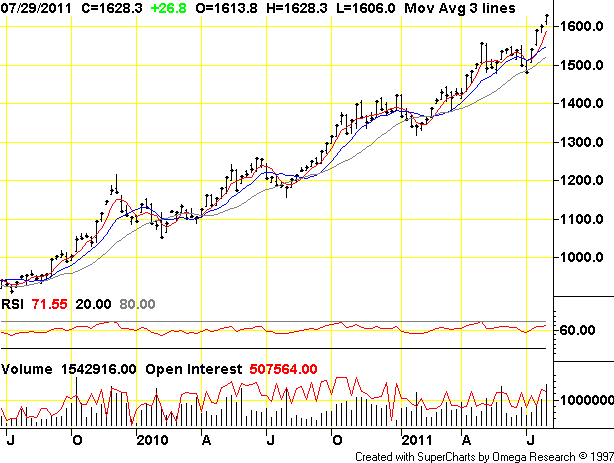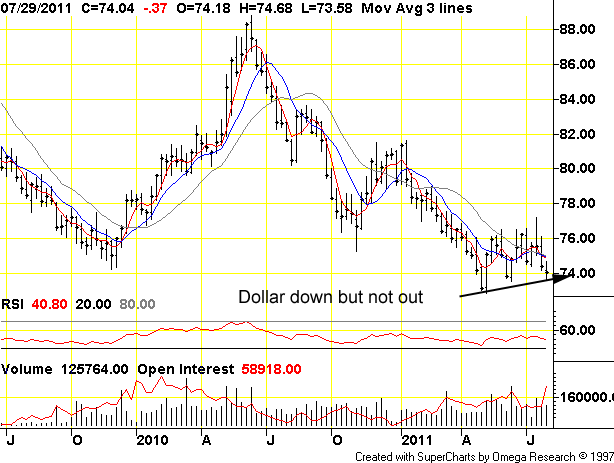The ghost of Andrew Mellon is haunting the United States Capital building after having escaped from confinement within his sons’ National Gallery of Art across the street. The mournful ghost calls out, “liquidate labor, liquidate stocks … liquidate real estate …” Havoc is threatened as the government’s right hand prevents its left hand from injecting the heavily addicted US finance economy with needed hits of heroin zero-cost capital.
The establishment does not have a clue: the costs of deleveraging are greater than any possible deficit savings! The American economy is structurally defective and not subject anymore to policy tools. It cannot earn a return on the capital it incinerates. Managers desire to increase the burn rate but cannot figure out how, in fact deny that capital burn is a problem. It’s this ‘comprehension gap’ that has rendered policy irrelevant.
What is needed is a new kind of economy without burn rates at all, but with husbandry rates instead. Since this mind-bogglingly simple ‘idea’ is outside the grasp of Congressional ‘Mole People’ the result is self-contradictory pantomimes and annoying publicity stunts such as ‘liquidate seniors, liquidate schools, liquidate state governments, purge that rottenness …” etc.
“Out, damned spot,” eh, Andrew?
It doesn’t matter what government do or don’t do, all actions at this point are forms of energy conservation. Final demand for fuel will be more constrained tomorrow than it is today.
Deficit reduction by itself does not directly address energy and resource waste. Promoters of deficit reduction promise an increase in energy consumption — growth — insisting the government competes with private interests for ‘waste opportunities’. In reality, our consumption economy’s point of stability or ‘coffin corner’ is the status quo, with $20 billion injected into the leaden heart of America’s economic corpse every single week. Injections enable energy waste, without them there will be less funds available overall to bid energy prices. Because depletion- driven extraction costs continually rise, declining prices leave fuel in the ground. Fuel becomes less available, (click all charts for big):
Figure 1: this is the cumulative front month WTI crude chart from TFC Charts:
Coffin Corner: rising prices also leave fuel in the ground as the price dynamic insists that fuel will earn a greater return in the future than wasted right away. Higher prices indicate some more valuable use for fuel — as an asset class or ‘monetary unit’ — than as an item to be squandered for the benefit of a handful of oligarchs.
The crude market isn’t under a lot of pressure with slowdowns in the EU and China. If liquidity becomes scarce, funds will roll out of crude — which represents real economy demand — into money markets. Right now, no need for liquidity so the price drifts downward, shutting in that marginal barrel.
A significant decline in price would be Red Flag to be held high, particularly below $83. US fuel below $80 would ordinarily be a balm but not under present circumstances. Prices decline due to effects on demand rather than large increases in oil supply. Sub- $70 fuel would probably mark the beginning of a deleveraging event that might not end until the 2009 price of $34 is tested.
$34 fuel would indicate a rooted dollar- driven debt deflation cycle. There would be very cheap gas that few could afford. Those with jobs would choose not to spend while those without would lack the means. Supply would chase demand as more supply would be shut in. With easy- to extract oil having been wasted with nothing to show for it, economies would be left with the dregs. Low- energy return crude supplies would fall out of economic reach:..
The establishment is desperately trying to figure out how to keep the system functioning without new money. Efforts appear to be more of the ‘left hand taking from one pocket to put in another. It’s a matter of keeping Wile E. Coyote in the air as long as possible: here’s Bruce Krasting’s take:
Where would Treasury get the cash? Easy! They would sell securities to the public. Just like they always do. Who would buy these short-term government notes? Easy! The big banks would do it. They would take the same paper back to the Fed who would Repo it with a 0% haircut. Just like they always do. Could this be done for $500b? Easy! Just like it’s always done.I am absolutely convinced that Geithner has called the Fed and the big shots at the money center banks. Everyone will play ball. I’m willing to bet that Obama has called Jamie Dimon over at JPM and put it on the line.
Um … no! If the Treasury could sell to the public it would be doing so already without regard to the debt ceiling. Any new money to the Treasury must come by way of tax receipts not more borrowing. Right now, the Treasury has to come up with about $130- 140 billion dollars next month in new money. If it cannot borrow it cannot pay unless tax receipts magically increase.
For all practical purposes the Treasury is out of heroin cash.
It doesn’t look like a panic is brewing. Here’s the Comex gold chart:
Figure 2: Gold and silver have been leading the markets. Here is what ‘no change’ looks like in graphic form. Deleveraging elsewhere looks to push liquidity toward gold and silver as it did toward crude in 2008. Gold is liquid, less worrisome than cash and carries a mystique … today.
What about tomorrow? A cash squeeze would have gold/silver collateral being sold, “at the market” to satisfy margin calls at the same time paper would be thrown at metal, everywhere. There is a lot of paper out there and only so much gold. Assumptions about gold and silver are being reexamined. In a recession, gold can become too valuable and an economic end in itself. This happened starting in 1931 with the failure of the Austrian Creditanstalt bank. The outcome of that bank failure was a world economy saddled with monetary gold that was constantly revalued upward. Obtaining gold became the economy, everything else collapsed.
The West is not at that point yet, but the signals are flashing.
Right now, there is no evidence of a cash squeeze … Here’s the dollar index futures chart:
Figure 3: Analysts keep looking for inflation/dollar devaluation here but all roads from Congress lead to deflation. The only way for the dollar to lose value is for Congress to pass a large stimulus bill. Since hell will freeze over first, any cut in government spending is going to render dollars scarce and valuable. Even if the USA government lays an egg, the dollar won’t; it’s a thing, valued relative to other things. Governments: the messy USA version is proving its value in ways that efficiency for its own sake cannot.
Sloppy US democracy is far preferable to the slickly mendacious Chinese or Japanese versions which endless promote ‘order’ and ‘harmony’ while insiders siphon nations’ wealth like vampires. All governments lie to themselves about energy constraints, but the US along with the stumbling- bumbling EU have the outside chance of finding ways to come to terms with energy in an imaginative way. China cannot, it is trapped in its own energy coffin corner. Meanwhile, Japan’s demonic establishment shovels its children into the radioactive cauldron to support a handful of nuclear industry maggots.
The Tea Party radicals such as Michele Bachmann and Jim DeMint are identical to the flag burning, epithet hurling anti-establishment icons Abbie Hoffman and Jerry Rubin. Right now, America desperately needs an anti- establishment, epithet hurling anything!
This is so, even as the Party pretends to cloy itself to the establishment while being dead wrong about everything! Abbie, Rennie, Bobby, Jerry and the rest of the Yippie radicals were dead wrong about everything, too! The ‘public’ has been mentally short-circuited by advertising and the promise of lottery winnings. They have been and hung with a ‘Death by Fat’ anti-economic non-culture. Bachmann and her cohort amplify ongoing deflation: Bravo Michele! The more intransigent the cohort is, the greater likelihood of chaotic, non-linear deleveraging event. A chaotic unwind would solve America’s debt problem while bankrupting the energy consumption ‘industries’ which are all massively over-leveraged.
The establishment promotes a ‘recovery’ which is actually a Frankenstein monster held together with bailing wire and duct tape. The Tea Partiers represent a line squall that a proper economy would weather. Ours can’t possibly. The Tea Party makes — not helps — America conserve energy and preserve the environment. Tea Party rigor is the tool at hand to smash the waste- based economy.
More power to them!
Meanwhile, questions have been raised here in Undertow Land about Chinese lending, particularly the murky world of ‘platform’ lending along with other sources of borrowed capital in its ‘Shadowy Banking System’ of loan shark lenders. Here’s something from Caixin:
Bully for Private Loans in a Credit CrunchWen Xiu (Caixin)
Non-traditional private lending is greasing China’s credit wheels in ways that policy-controlled banks cannot
The tighter it gets for monetary control in China, the louder private lending roars.
China’s private lending arena – including intra-family loans, gray-zone financing, business-to-business deals, entrusted loans and more – has been expanding rapidly as the nation’s bank credit contracts.
Investment capital has been migrating away from banks and their controlled lending rates toward nontraditional private lenders whose clients are willing to pay high – even exorbitant-interest rates.
Central bank policymakers find themselves in an awkward position. They’ve tightened monetary controls by, for example, clamping down on credit over the past year to fight consumer price inflation. But in the process, they’ve frustrated a broad swath of the nation’s business community by raising financing costs, or blocking loan access altogether.
Inflation-fighting regulators seeking to slow the nation’s consumer price index recently asked major banks to delay scheduled loans and regularly report lending activity, bank sources told Caixin.
“At present, our bank’s Beijing branch requires that each branch submit the amount loaned every week, including which companies got funds and how much,” said one source.
Policymakers have also forced banks to freeze lending to the credit-hungry property development sector.
“Real estate developers currently rely mainly on private lending for their cash flow,” a bank executive said. “One real estate developer borrowed a few hundred million yuan at a 60 percent interest rate per annum.”
Indeed, such high interest rates have not stopped an increasing number of companies from reacting to policy tightening by turning to private lenders including individuals and companies, such as steel manufacturers, said a risk control manager at a loan guarantee firm.
Annual interest rates for private loans from steel makers are usually 36 to 94 percent, for example, at a time when banks charge some large, state-owned companies less than 10 percent.
Broad Impact
The shift in borrowing behavior is affecting the government’s internal discussions over whether to let the market determine interest rates, which are now set by the central bank, as well as foreign exchange rates in the context of China’s push to make the yuan an international currency.
A central bank source told Caixin that authorities currently favor shifting to market-oriented interest rates, noting that in the current atmosphere loosely regulated banks enjoy an advantage over tightly controlled competitors.
According to the central bank, total fund-raising in China climbed to 7.76 trillion yuan in the first half 2011. Bank loans accounted for 4.17 trillion yuan of that amount, which means non-bank financing controlled 46 percent of the business.
The Undertow is still working on the self-funding underground Chinese economy. More clues and more questions. The question is, where does a steel mill get the money to become a bank? From ‘Brand X’ banks or the Chinese central bank? That wouldn’t work because nobody would borrow from a bank’s customer — the steel mill — when they can borrow from the banks themselves.
The steel mills have access to their own source of funds. They earn yen, euros and dollars by trading grimy metal bits for overseas currencies. If steel mills and other manufacturers can find eager customers for 94% loans they can find customers for their dollars, yen and euros as well. They would only have to offer yuan discounts to the ‘official’ exchange rates.
At 46% of lending activity, the underground economy is getting ready to swallow the above ground variety. At the same time, the interest rates charged by loan sharks most accurately reflect inflation in China: above 35% or much more depending upon the locale. The 96% rate on what would presumably would be a short term platform loan suggests that prices are doubling every year or less. The hyperinflation that Gonzalo Lira and others warn about in the US is taking place right now in China.
Even if there is no other internal source of inflation, pricing money at very high rates in an exchange rate scenario is by itself hyperinflationary. Foreign exchange capital would — and does — flow into China to obtain a fairly low- risk 90% return. Who swims with the Chinese sharks? You do if you buy Chinese goods.
This outlines the futility of the Peoples Bank of China to control inflation or manage the economy with ordinary monetary tools. The best the central bank can do is try to keep a rein on liquidity by issuing enough yuan to keep both the over-and under economies functioning. Fuel constraints and flight of dollars back out of China — because of dollar repatriation demand in the US — will end up putting an end to China hyperinflation which will likely result in an extremely severe recession in China.



